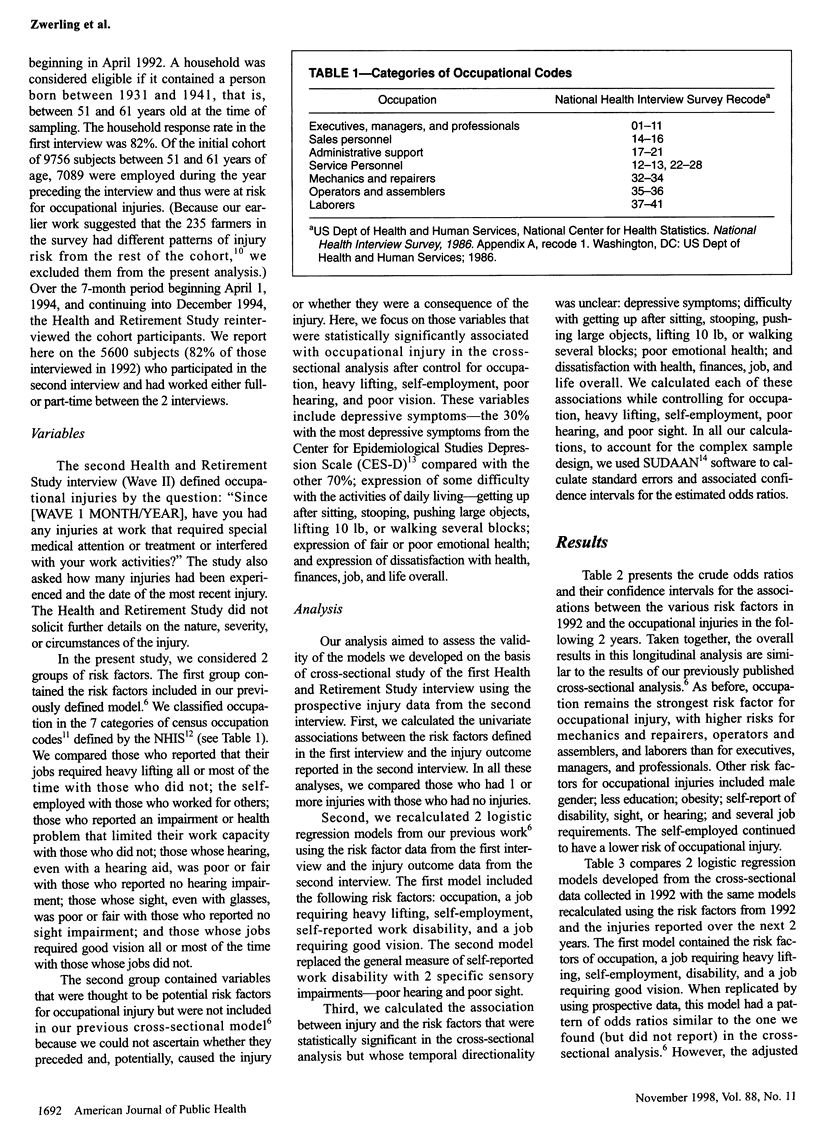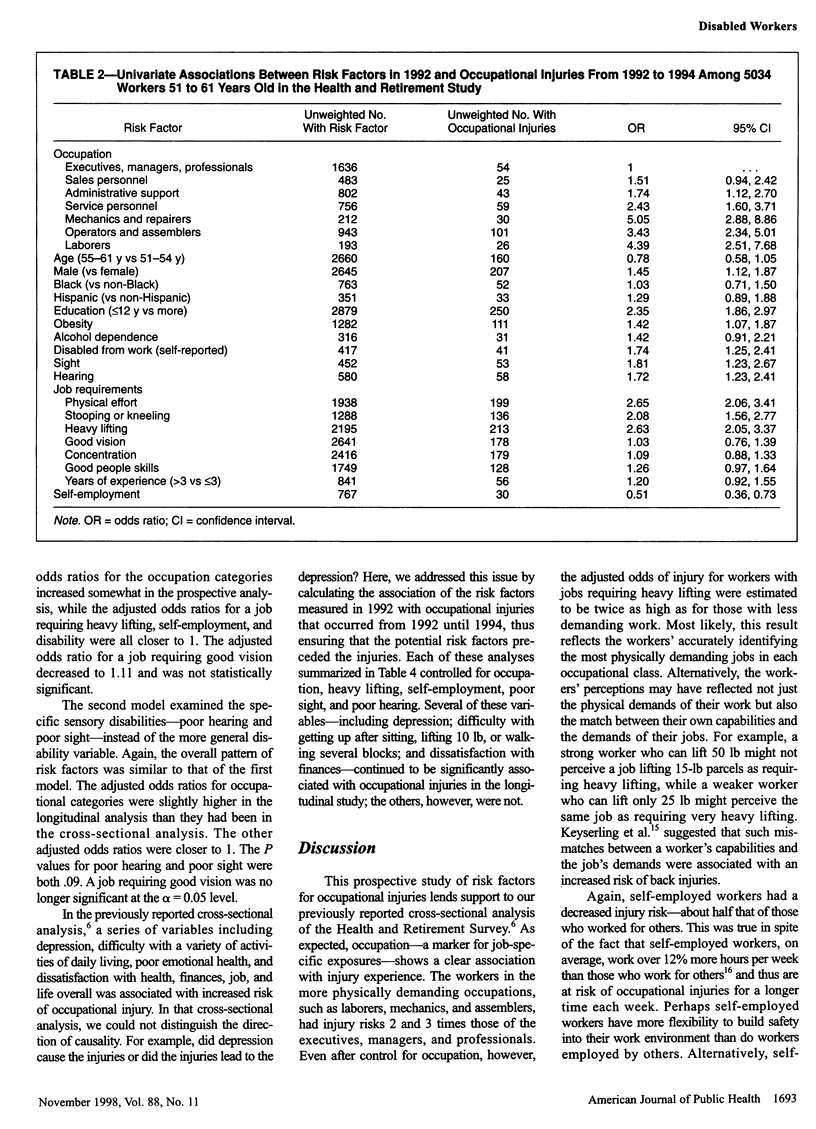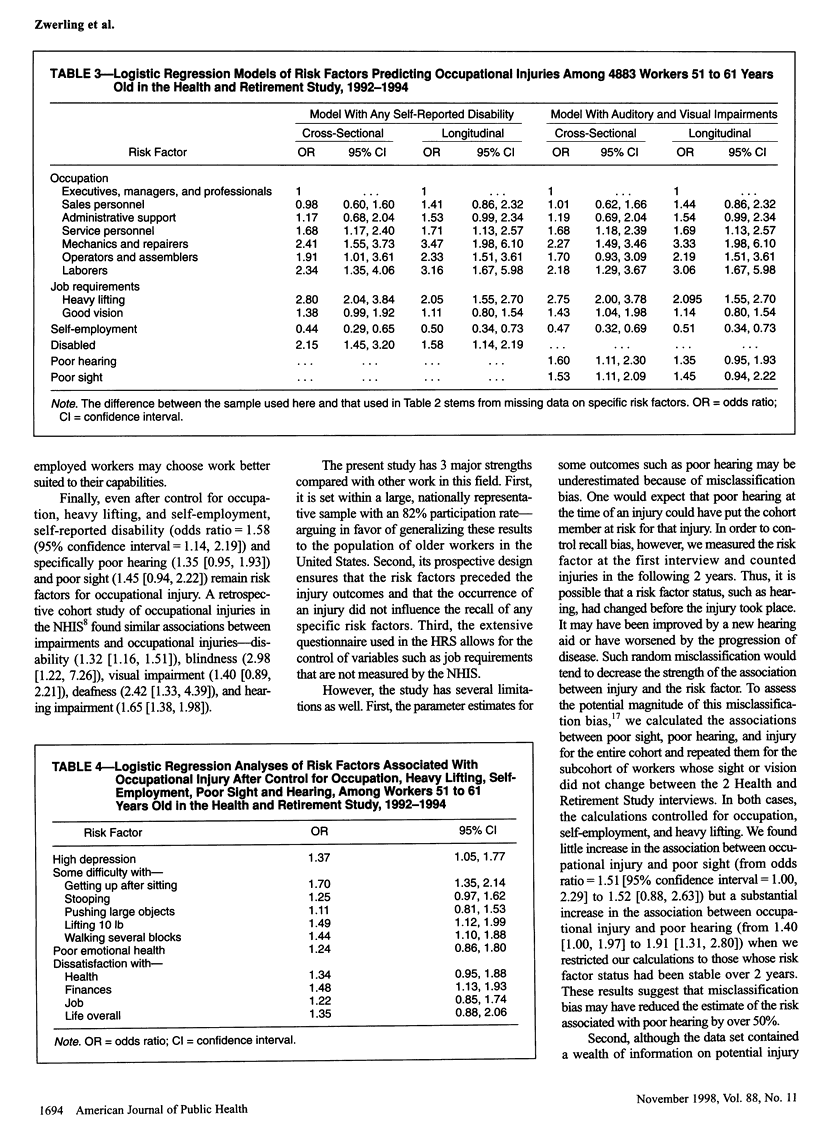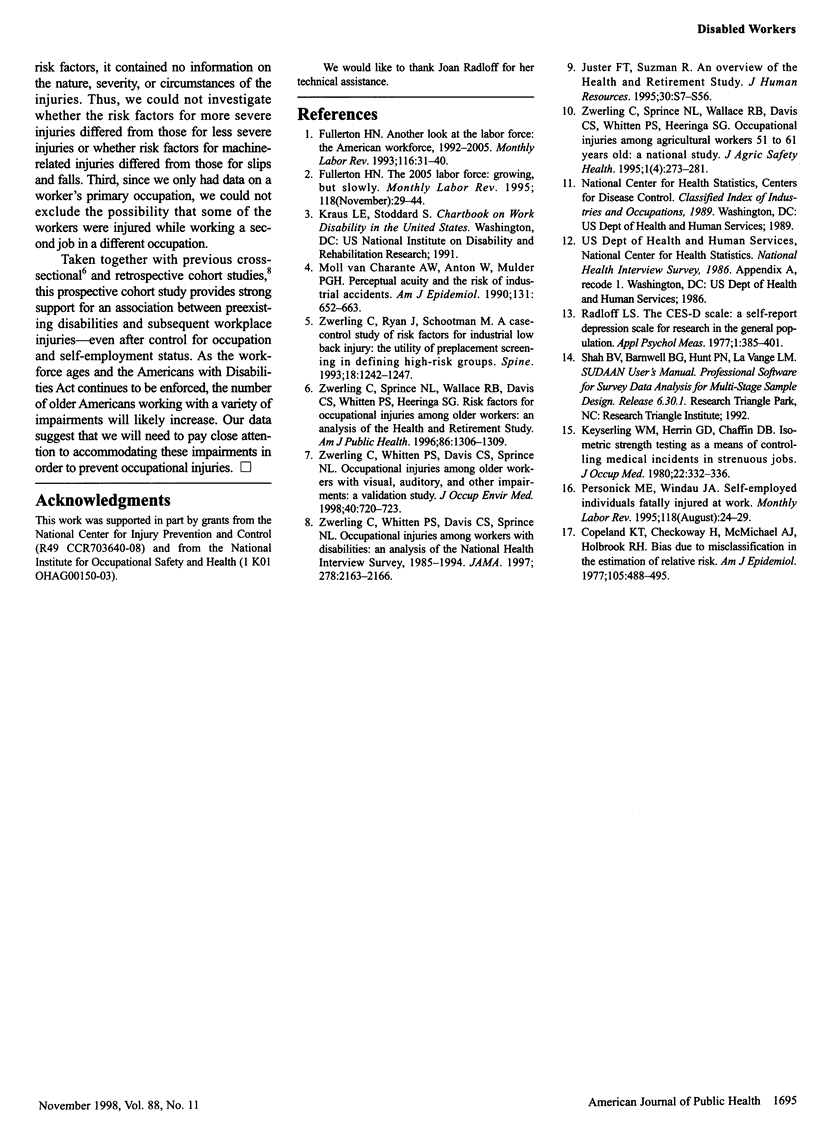Abstract
OBJECTIVES: We tested the hypothesis that among older workers, disabilities in general, and hearing and visual impairments in particular, are risk factors for occupational injuries. METHODS: Using the first 2 interviews of the Health and Retirement Study, a nationally representative survey of Americans aged 51 to 61 years, we conducted a prospective cohort study of 5600 employed nonfarmers. RESULTS: Testing a logistic regression model developed in a previous cross-sectional study, we found that the following occupations and risk factors were associated with occupational injury as estimated by odds ratios: service personnel, odds ratio = 1.71 (95% confidence interval = 1.13, 2.57); mechanics and repairers, 3.47 (1.98, 6.10); operators and assemblers, 2.33 (1.51, 3.61); laborers, 3.16 (1.67, 5.98); jobs requiring heavy lifting, 2.05 (1.55, 2.70); self-employment, 0.50 (0.34, 0.73); and self-reported disability, 1.58 (1.14, 2.19). Replacing the general disability variable with specific hearing and visual impairment variables, we found that poor hearing (1.35 [0.95, 1.93]) and poor sight (1.45 [0.94, 2.22]) both had elevated odds ratios. CONCLUSIONS: Poor sight and poor hearing, as well as work disabilities in general, are associated with occupational injuries among older workers.
Full text
PDF




Selected References
These references are in PubMed. This may not be the complete list of references from this article.
- Copeland K. T., Checkoway H., McMichael A. J., Holbrook R. H. Bias due to misclassification in the estimation of relative risk. Am J Epidemiol. 1977 May;105(5):488–495. doi: 10.1093/oxfordjournals.aje.a112408. [DOI] [PubMed] [Google Scholar]
- Keyserling W. M., Herrin G. D., Chaffin D. B. Isometric strength testing as a means of controlling medical incidents on strenuous jobs. J Occup Med. 1980 May;22(5):332–336. doi: 10.1097/00043764-198005000-00006. [DOI] [PubMed] [Google Scholar]
- Moll van Charante A. W., Mulder P. G. Perceptual acuity and the risk of industrial accidents. Am J Epidemiol. 1990 Apr;131(4):652–663. doi: 10.1093/oxfordjournals.aje.a115549. [DOI] [PubMed] [Google Scholar]
- Zwerling C., Ryan J., Schootman M. A case-control study of risk factors for industrial low back injury. The utility of preplacement screening in defining high-risk groups. Spine (Phila Pa 1976) 1993 Jul;18(9):1242–1247. doi: 10.1097/00007632-199307000-00020. [DOI] [PubMed] [Google Scholar]
- Zwerling C., Sprince N. L., Wallace R. B., Davis C. S., Whitten P. S., Heeringa S. G. Risk factors for occupational injuries among older workers: an analysis of the health and retirement study. Am J Public Health. 1996 Sep;86(9):1306–1309. doi: 10.2105/ajph.86.9.1306. [DOI] [PMC free article] [PubMed] [Google Scholar]
- Zwerling C., Whitten P. S., Davis C. S., Sprince N. L. Occupational injuries among older workers with visual, auditory, and other impairments. A validation study. J Occup Environ Med. 1998 Aug;40(8):720–723. doi: 10.1097/00043764-199808000-00010. [DOI] [PubMed] [Google Scholar]
- Zwerling C., Whitten P. S., Davis C. S., Sprince N. L. Occupational injuries among workers with disabilities: the National Health Interview Survey, 1985-1994. JAMA. 1997 Dec 24;278(24):2163–2166. [PubMed] [Google Scholar]


